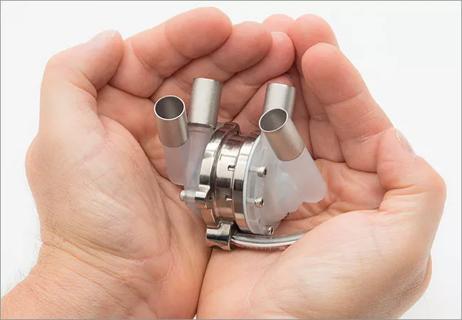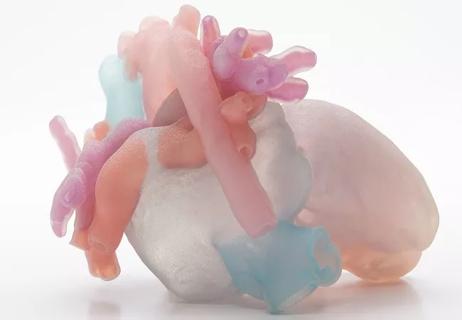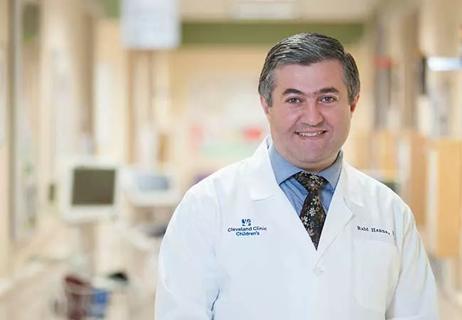Can’t-miss CME course on Oct. 7 & 8

Cleveland Clinic Children’s Hospital for Rehabilitation (CCCHR) has a large, robust staff of physicians and therapists who operate unique programs in a wide variety of pediatric rehabilitation and pain management specialties.
Cleveland Clinic is a non-profit academic medical center. Advertising on our site helps support our mission. We do not endorse non-Cleveland Clinic products or services. Policy
These innovators will share their expertise at the first Pediatric Rehabilitation Symposium, on Oct. 7-8, on Cleveland Clinic’s Beachwood Administrative Campus. The two-day symposium will feature lectures and break-out sessions on the latest evidence-based interventions and treatment techniques for pediatric conditions, including neurological disorders, orthopaedic conditions, autism and chronic pain.
Giovanni Piedimonte, MD, Physician-in-Chief of Cleveland Clinic Children’s and President of CCCHR, will give the welcome address and speak on the current state and future of pediatrics.
The topics are geared to a broad audience of pediatricians, pediatric specialists, nurses, nurse practitioners and therapists, who treat children in inpatient and outpatient settings.
Hot topics to be discussed include:
Multiple speakers will provide insight in this important area of pediatric rehabilitation. Keynote speaker Gerard Banez, PhD, Program Director of Pediatric Pain Rehabilitation, will discuss the aspects of chronic pain that must be addressed for a successful outcome. Multiple therapists will explain the services employed in managing chronic pain and centralized pain syndromes.
Medical conditions complicate the diagnosis and treatment of such mental health issues as anxiety and depression. Keynote speaker Veena Ahuja, MD, a child psychiatrist on the CCCHR staff, will discuss how to approach these issues.
Cleveland Clinic pediatric neurologist Neil Friedman, MBChB, will present the latest information on the impact and morbidity of pediatric stroke in Saturday’s keynote speech.
Michael McHugh, MD, Interim Chair of Pediatric Critical Care Medicine and Medical Director of the CCCHR, will explain the ideal multi-step process.
Symposium Co-director Benjamin Katholi, MD, Medical Director of the Center for Pediatric Integrative Medicine, will review special treatments that include frequency-specific microcurrent (FSM) therapy, an exciting new treatment proving successful in a variety of indications.
Research supports the GMA as a screening tool and has found it to be more than 90 percent accurate in determining whether an at-risk baby will develop neurological issues. Results provide a guideline for more intensive follow up and earlier initiation of therapy.
The incidence of torticollis has risen from 1 in 300 to 1 in 60 in the United States since 1994. General pediatrician Steven Wexberg, MD, and a physical therapy team will explain why and provide information on exercises and positioning to prevent and correct the problem.
When a child has one weaker arm due to stroke or Erb’s palsy, casting the stronger arm, and working on therapeutic intervention and focused activities, can improve outcomes and functional use of the involved arm. Occupational therapists will discuss how CCCHR uses this form of therapy to help patients achieve outstanding improvements in strength and use of the involved side.
Speech therapists, working with a team of physical and occupational therapists, will discuss and demonstrate optimal access and positioning for children who require alternative and augmentative communication devices.
Several sessions are devoted to rehabilitation techniques for children with overactive sensory systems. Attendees will leave with tips that can be utilized in their practice and passed along to parents for ongoing rehabilitation.
Learn the latest techniques from a certified pediatric lymphatic therapist.
Other topics including using biofeedback for headaches, transitioning babies with oral motor deficiencies from bottle to cup, treating apraxia, handling concussion, caring for medically fragile patients, managing patients with altered states of consciousness, and more.
“We are very excited to highlight the incredible staff and innovative programs at the Cleveland Clinic Children’s Hospital for Rehabilitation and share this information with the audience. Our goal is that symposium attendees leave with new information on successful treatment interventions that can be applied in a variety of pediatric diagnoses,” says Patricia Martin, PT, Director of Therapy Services at CCCHR and symposium Co-director.
To register, visit ccfcme.org/PedsRehab16.

Developing the score, evaluating its performance and exploring what’s next

Advances in in vivo models continue

Use of simulation helps students reach a diagnosis faster and more cost-effectively

Post-NICU discharge visits are convenient and effective

Meticulous planning made this two-stage repair of an infant's heart successful

Preparing physicians for real-life respiratory crises

A highly innovative treatment process for young people